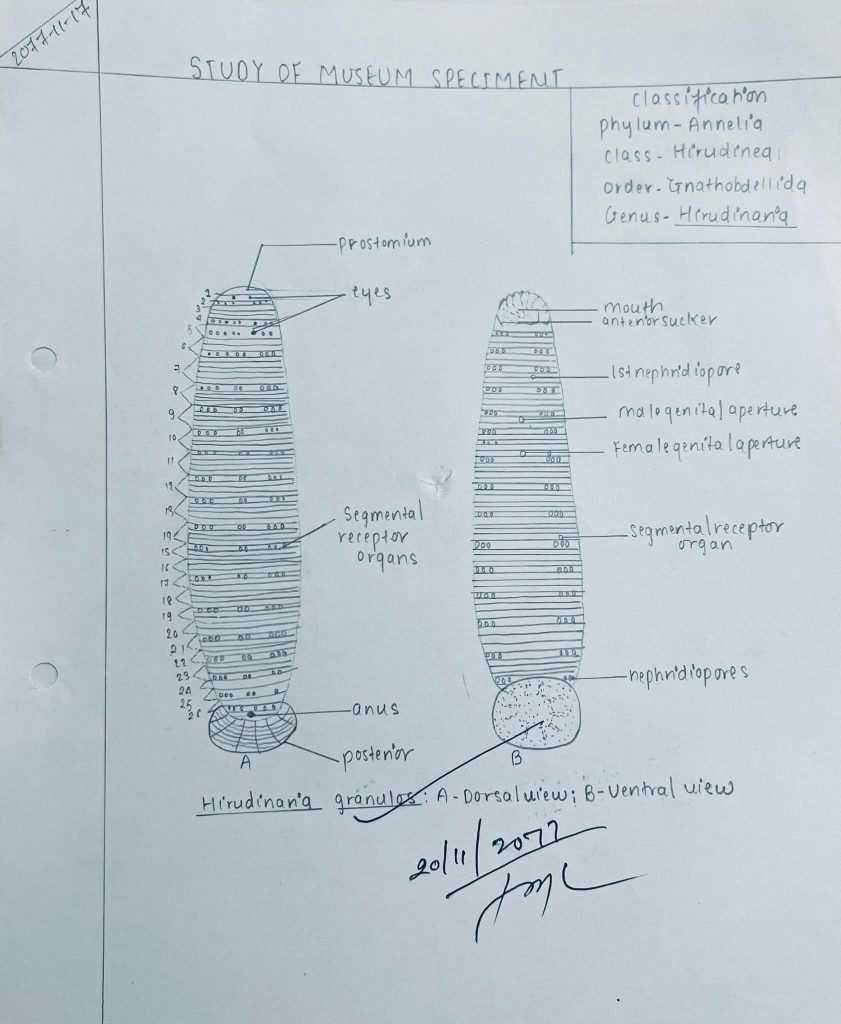Comments of Hirudinaria
Distribution:
Hirudinaria has cosmopolitan or world wide distribution specially found in India and Myanmar.
Habit and Habitat:
Hirudinaria is found in freshwater ponds, lakes, slow running streams and swamps. It is sanguivorous in Habit.
General characters:
1. Hirudinaria granulosa is commonly known as Indian cattle leech.
2. Body is elongated, dorso- ventrally flattened, measuring 30-35 cm in length with dorsal surface green and ventral surface organ yellow in color.
3. Body is divided metamerically into 33 somites or segments. Each segment is further divided into rings or annuli.
4. Anterior and posterior suckers are well-developed.
5. Dorsal five segments bear five pairs of eyes.
6. Alimentary canal is a straight tube.
7. Sexual reproduction is common.
Economic Importance:
Hirudinaria medicinalis has been used to reduce blood pressure in humans since ancient times.
Diagram of Hirudinaria

hirdinaria granulos
